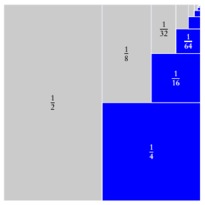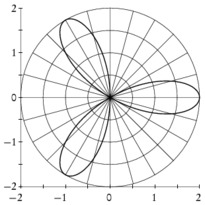En cliquant sur une imagette, vous accéderez au source et à l'image. En cliquant sur cette dernière, vous ouvrirez le fichier PDF associé.














/* -*-ePiX-*- */ #include "epix.h" using namespace ePiX; const int M=8; double MAX=1.5, Bd=2; P F(double x, double y) // fake pole { return P(x, y, x/(0.01+x*x+y*y)); } P pt1(-MAX,-MAX), pt2(MAX, MAX); int main() { bounding_box(P(-Bd,-Bd), P(Bd,Bd)); unitlength("1in"); picture(2.5,2.5); offset(2.25,-0.5); begin(); domain R(pt1, pt2, mesh(2*M,2*M), mesh(6*M,6*M)); label(P(x_min, y_max), P(2,-2), "$z=\\mathrm{Re}\\,\\frac{1}{x+iy}$", br); viewpoint(6,8,5); clip(); clip_box(P(-Bd,-Bd,-Bd), P(Bd,Bd,0)); fill(); surface(F, R); // bottom half gray(0); rect(pt1, pt2); fill(false); pen(0.15); rgb(0.75,0.75,0.75); plot(F, R); plain(); // simulate transparency clip(false); magenta(); grid(pt1, pt2, M, M); // axes arrow(P(-Bd,0,0), P(Bd,0,0)); label(P(Bd,0), P(-4,-2), "$x$", l); arrow(P(0,-Bd,0), P(0,Bd,0)); label(P(0,Bd), P( 2,-2), "$y$", br); arrow(P(0, 0, 0), P(0,0,2.5)); label(P(0,0,2.5), P(0,4), "$z$", t); clip(); clip_box(P(-Bd,-Bd,0), P(Bd,Bd,Bd)); fill(); surface(F, R); // top half fill(false); pen(1.5); red(); plot(F, R.resize1(0.5,MAX).slice2(0)); end(); }








